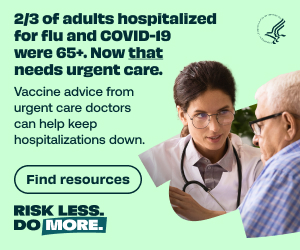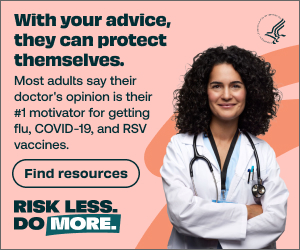In October, the ACEP Council will meet in Chicago to discuss issues of the day. Let us pledge to confront the real issues – from workforce to end-of-life care – with clarity and courage.
Believe it or not, as we emerge from the coldest “winter of our discontent” that I can ever remember, summer is coming, which fortunately, will then inevitably be followed by fall. What that means is that once again, in October, the American College of Emergency Physicians Council will meet in Chicago, as we always do prior to the Scientific Assembly, to set the agenda for our board of directors.
While the day-to-day management of the College is not the business of the Council, this body does have a very important function — to lay out real goals and objectives for the College. This critical function often can be sidetracked by personal agenda resolutions and grandiose proposals for world peace that will never be acknowledged by the outside world.
Some say “Management is doing things right. Leadership is knowing the right things to do.” And thus our problem begins.
The world changes. We need to look forward not back. I was a College member when we had no formal recognition as a specialty. I was there when we were a conjoint board with family practice. I was involved in the practice of emergency medicine for seven years before there was even a board exam to take. We won these fights. We have gone from four residencies in 1973, in which there was no promise of recognition for the graduates, to 167 allopathic and 46 osteopathic residencies of emergency residence in 2013. We won the residency fight too.
I remember the original ugliness of sitting with the representatives in the American College of Surgeons, explaining that we – not they – were seeing the vast majority of the trauma in these United States. I particularly remember suggesting to radiology that the person who read the “film” when a decision needed to be made should get the money. You can imagine how that went. It is clear looking back today that emergency medicine has skyrocketed to prominence, a true success story, and I’m pleased to have been present for much of it.
But these fights are for the most part behind us. We are now in much murkier waters. The clarity of our past goals and successes belies the uncertain nature of our future. George Bernard Shaw once wrote: “Some see the world as it is and ask why. I see the world as it could be and ask why not?” We live in a time of noncritical thinking; ridiculous government programs spend incalculable sums with no results. We ask no critical questions about outcomes.
Perhaps no specialty sees the results of bad decisions like emergency medicine. We should be the ones to take this bull (or donkey or elephant) by the horns and lead. We are the only country in the world that spends 22 percent of the healthcare dollar on administration of that dollar. The Brits are at six percent; the Germans seven percent. Singapore is at about five percent.
So, what’s the plan? We should insist in our board resolutions that graduates of residency programs be able to discuss articulately the differences between costs and charges. Graduates should understand fixed costs, variable costs and a marginal costs.
I know you’re thinking: “This is way beyond us. This is not our problem. Emergency medicine constitutes 2.5 percent of the healthcare expenditures in the United States.” I fully agree. But no one is better situated to take on the wallowing in excess which currently typifies the present situation in this intellectual and moral swamp.
The next president of the AMA will be an emergency physician. The stars are about to align in our favor, allowing us to play a part on the larger stage of healthcare.
Let me propose and challenge the more than 300 people who will sit as councilors in October in Chicago. We need real analysis of issues that affect the lives of emergency physicians, and we need to give specific direction to the board of directors so they can be held accountable for real productivity. I do not come to my uneasiness without credentials. I was a president of this College, a councilor, an emergency physician since 1974, and I studied economics my entire life. Here now I put forth the four horsemen of the medical apocalypse, which we either confront or risk being blown away with the tide of history.
Workforce
Workforce constitutes between 75 and 80 percent of the cost of emergency medicine. We are a volume-driven enterprise that requires patient flow to survive. The marginal cost of seeing one more patient is minuscule. See everybody. Eighteen years ago, I gave a talk about the emergency department as central hub of clinical decision making. We are the most cost effective, 24-hour-a-day place to sort out patients’ problems. We are the only logical place to decide which patients need expensive in-patient versus cheaper out-patient care. But who should do this? I envision multiple mid-level providers consulting with the emergency physician, scribes doing paper and computer work, techs handling most activities and nurses reserved for patients who truly need nursing input, i.e. the critically ill and those who need monitoring and IV medications.
What is the correct ratio of this staffing? No one knows because 80 percent of the cost of emergency medicine has never been studied. Why? Let’s direct ACEP to issue requests for proposal (RFPs) to study the most pressing problem facing America today — the workforce question. Who should be doing what? This is the question I’m afraid we lack the courage to ask. If we don’t have real answers to these questions, someone or some group antithetical to our interests will push their own agenda and us aside. There is no emergency department director in the country who has not asked these questions of himself or herself. We need answers. We should be the specialty set to propose a decrease in healthcare spending. Our popularity in Congress will soar to new heights.
Overtesting
The second horseman is the absolute waste of resources and over-testing that slows down care and raises charges (not necessarily costs). We have no consistency of care in this country. If you ask the mid-levels, the variability in physician ordering drives them crazy. They practice a completely different kind of medicine depending on the physician on duty. It makes no sense. There is often a five-fold variation between physicians at the same hospital in the ordering of head CT scans. Before you start on the standard rant about the lawyers, just remember it is a rarity to have a lawsuit based on the ordering or non-ordering of one test. We need to look at ourselves before we start blaming the outside world. The cold fact is we in the Western world are number one in cost and number 24 in combined healthcare outcomes. No one in the recent Obamacare debate looked at this 800-pound gorilla.
End-of-Life Care
The pale rider of our four horsemen is end-of-life care and our role with these patients. The ethical ambiguity of aging and death constitutes the largest proportion of all Medicare money. Death in America is both inelegant and expensive, for no good reason. After all, you can die for free. An obvious career change or addition for emergency medicine and their current practice is to take charge of palliative care. This is where the rubber meets the road. We need to stop throwing up our hands when the demented near-dead come to the emergency department with lights and sirens, and get involved in stopping such economic and moral atrocities. Let’s just agree that in an easily definable patient population epinephrine never returned anyone to a functional state – never! The save rate in such groups is zero, give or take experimental error. But we continue to put up with this craziness out of fear – fear we will have to talk with frightened and confused families; fear we will be sued; fear we will not be able to bill such patients at a Level 5; fear of criticism from our institutions and our fellow physicians.
Death is now an unequivocally American disease, which is emotionally and financially killing not only the patients but the country. What we are doing is adding a greater debt load for our grandchildren with no positive outcomes. Wake up, America! You have nothing to lose but your indebtedness.
The Sacred Cow
The final horseman now appears, larger than the rest and shrouded in mist. It is the wrongly held belief that healthcare is a sacred product. Damn the cost if it saves a life. (Remembering that no life is really saved. All we do is change the date on the death certificate.) The American public has been sold a bill of goods about what medicine can and cannot do. We continue to shrink on the world stage and yet we ask the band to play The Stars And Stripes Forever.
Time has come to level with everyone – from the Congress to the man on the street – that tough choices are needed in healthcare so that there will be something left for the next generation to enjoy. The question is simple: Is healthcare a product? Is it a religion? Is it a process? We are being governed by people who are from the last century, the American century when gasoline was 25 cents a gallon, college was affordable, and we won wars. Most of that is gone now. There are new players in town.
Our healthcare largess is hurting us in every possible way. Products become unaffordable. Useless cures are clogging the airways, giving false hope to the most vulnerable among us. There exists the strange illusion that if grandma can live just one more day, all of her medical problems will disappear and she will be whole again. Yes, I am talking about meaning to the lives we have and acceptance of certain preordained outcomes. If the Council can solve this one, they’ll have my undying gratitude.
Vitam impendere vero









4 Comments
Well said. I have watched our society and the practice of medicine (as it should be done) spiral out of control. It should be our mantra to waken everyone. No one else will do it. My fear is that no one wants to listen…
Medicine, like everything else now, is a money game. Like it or not, it now comes down to this. There are two options. Until the government, hospitals and other organizations support our decision to not give care based on financial incentives/penalties (i.e., customer satisfaction, re-admission of (non-compliant) patients, et al), we will not escape this. Or, we do as others do when work place situations become untenable, we refuse to be treated in such demeaning and denigrating ways. Ultimately, leaders should lead and as of yet, I’ve seen no strength or leadership nor have faith in medical organizations to make propose, much less follow through, dramatic, painful, but appropriate steps to let physicians (and other health care providers) perform the true art of medicine.
Dr. Henry,
Thank you for your sage insight into our broken system. You place our complex issues into a very approachable perspective. I’m a mom of two young boys in addition to my work as an emergency medicine physician. When my grandfather practiced general medicine in Mississippi he was often paid in produce or a loaf of bread, but he also had a separate part of his waiting room with that dreaded sign that said “colored”. What a broken system then as well as now. I just hope my boys are able to witness healthcare changes in their lifetime that make our current practice seem as ridiculous as that “colored” sign in my grandfathers waiting room. If I’m lucky, I’ll have the benefit of a long career in this field. Day to day, I’m probably not that different from many peers who are tunnel-visioned into their individual lives and practices. You offer a tremendous view from the eagle’s eye. Thank you for you incredible insight. Every time that I read your commentaries or listen to an interview or speech by you I am challenged in the best of ways. Thank you for challenging us to be more.
Sincerely,
Emily Tarver
In regards to staffing (I.e. horseman #1):
If we move to a model that EPs are overseeing cadres of MLPs, there will be less need for EPs. This is concerning especially as the number of residencies continues to expand. What was once a wide open job market can potentially become one in which it is difficult to find a job. Higher copays, urgent care centers and the push towards expanded primary care has led to stagnant growth in ED visits over the past several years–less volume equals less jobs. This can also play into the hands of large contract groups who are incentivized to keep there staffing costs to a minimum. EPs struggling to find work will be willing to take jobs for less and less.
While the field needs to be open to change and to new staffing models, we must acknowledge that there are challenges that need to be addressed. More midlevels and urgent care centers equals less demand for EPs. At some point we need to take a hard look at residencies and put the brakes on expansion and possibly reduce the number of total available spots. We are not the first field to face this challenge, but we need to be honest with ourselves–after 30-40 years of uninhibited growth, we are nearing the intersection between the supply and demand curves for EPs.